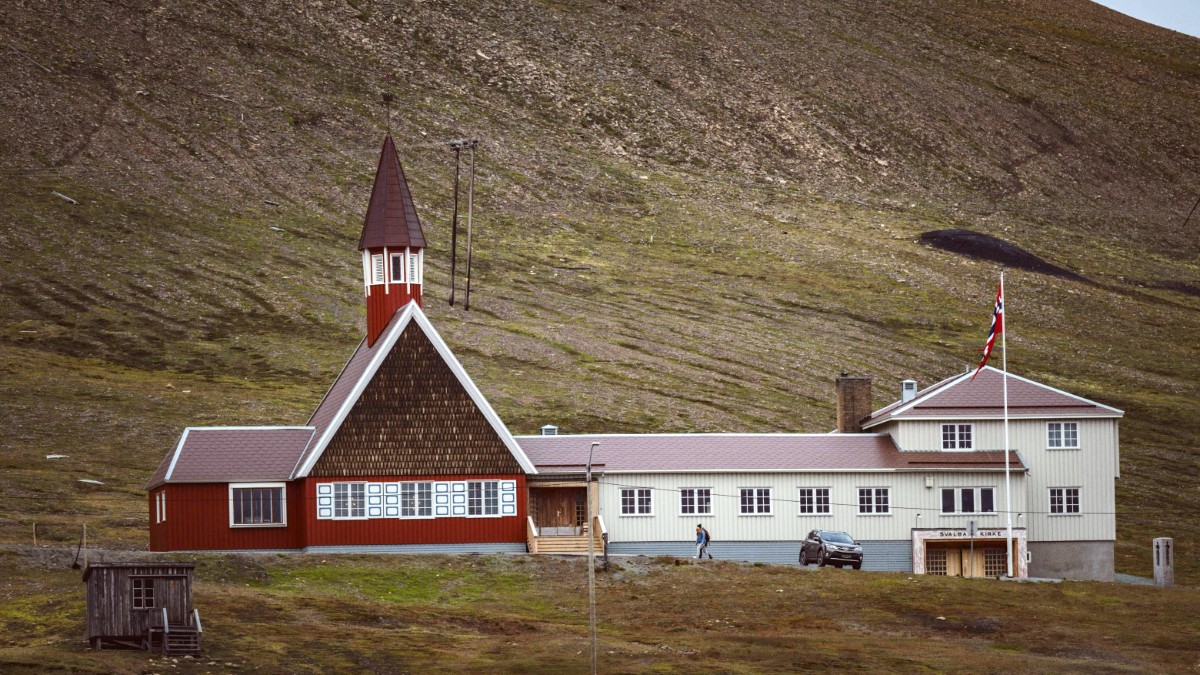
Svalbard, Norway
Norwegian culinary traditions are prominent, focusing on fresh, high-quality ingredients. Although king crab is mainly from northern Norway, it often appears on menus due to its Arctic association. Local game, like reindeer, seal (less common now), and grouse, also feature. Local berries add a touch of freshness in summer. Flavors are generally robust and hearty, well-suited to the cold climate. Expect rich sauces and savory preparations.
Due to Longyearbyen's small size and its reliance on imported food sources, extensive regional variations within Svalbard are limited. However, some restaurants strive to incorporate local game or seafood, offering an unique Arctic twist to their menus. Chefs often focus on quality ingredients rather than diverse regional styles.
Typically served from 07:00 to 10:00. Many accommodations include breakfast.
Served from 11:00 to 14:00 or 15:00. Cafes and pubs offer good lunch options.
Typically starts from 18:00 and continues until 21:00 or later. Most restaurants focus on dinner service.
This is a popular local delicacy. It often appears as steak, stew, or carpaccio. Reindeer meat is lean and has a distinct, rich flavor.
A truly Arctic flavor.
Arctic Char is a freshwater fish found in Svalbard's lakes. It tastes similar to salmon or trout, often served pan-fried or baked. King Crab, though mainly harvested in northern Norway, often features on menus.
Fresh seafood from polar waters.
The Svalbard rock ptarmigan (grouse) is sometimes served roasted. Seal, less common today, might still be offered by specialized restaurants; it has a strong, unique flavor.
Unique game from the Arctic.
Due to Longyearbyen's reliance on imports, distinct seasonal food traditions are less prominent. However, during Christmas or Easter, restaurants might feature traditional Norwegian holiday dishes.
Longyearbyen's chefs focus on the quality of ingredients, often incorporating what local game and seafood sources are available.
Longyearbyen features establishments for sophisticated dining experiences, focusing on gourmet Arctic cuisine and refined menus.
Several places offer casual dining with hearty meals, popular for both locals and visitors, providing a reliable experience.
For cost-effective meals, quick options and grocery shopping are available, allowing travelers to manage their budgets.
While Norwegian and Arctic cuisine dominate, some international dishes are available, mostly within hotel restaurants. Pizza and burgers are widely available at pubs and casual eateries.
No traditional markets or food halls; Coop Svalbard is the main grocery source.
For budget dining, visit Coop Svalbard for groceries. Prepare meals at your accommodation. This helps manage costs.
Most restaurants offer vegetarian options. Vegan options are more limited but increasing. Check menus or call ahead.
Restaurants generally accommodate if informed in advance. Communicate needs clearly.
Dedicated options are extremely limited. Travelers should self-cater and bring certified foods.
Bring specific snacks for restrictive diets. Coop Svalbard has basic ingredients.
Cooking classes and dedicated food tours are not widely available in Longyearbyen. The focus is more on outdoor activities.
Farm visits and food producers are not applicable due to Arctic climate.
Occasional local culinary events might take place, but they are not a regular feature of the tourism calendar. Check local listings or the Visit Svalbard website for any special events during your visit.
Limited, specific events may occur.
For wilderness dining or brewery tours, booking in advance is advisable as spaces can be limited. Many tours combine activities with meals.
For specific dietary requirements, communicate them clearly when booking tours or restaurant reservations. This ensures the best experience.
Most restaurants offer at least one vegetarian option on their menus. Vegan options are more limited but are becoming more available as global awareness grows. It is advisable to check menus online before visiting or call ahead to confirm options.
Restaurants are generally accommodating if informed in advance about allergies or intolerances. Communicate your needs clearly to the staff. They can guide you on suitable dishes or modify existing ones. Norwegians are generally aware of common allergies.
If your needs are very restrictive, the best approach is to bring specific snacks or easy-to-prepare items with you. The Coop Svalbard supermarket has a reasonable selection of basic ingredients, allowing you to prepare meals that meet your dietary requirements.
Inform restaurants about allergies or dietary needs when you book or order. They can often accommodate you with suitable dishes.
Early notification provides the best service.
For very specific or restrictive diets, purchasing groceries from Coop Svalbard and preparing meals at your accommodation is a reliable approach.
This offers full control over ingredients.
Don't miss reindeer, Arctic char, and king crab for an authentic taste of Svalbard.
Inform restaurants in advance about any allergies or specific dietary requirements for a smooth experience.
Utilize Coop Svalbard for groceries and self-catering to help manage meal costs.
Longyearbyen's dining options reflect its remote location and Norwegian traditions. Embrace the unique local ingredients.